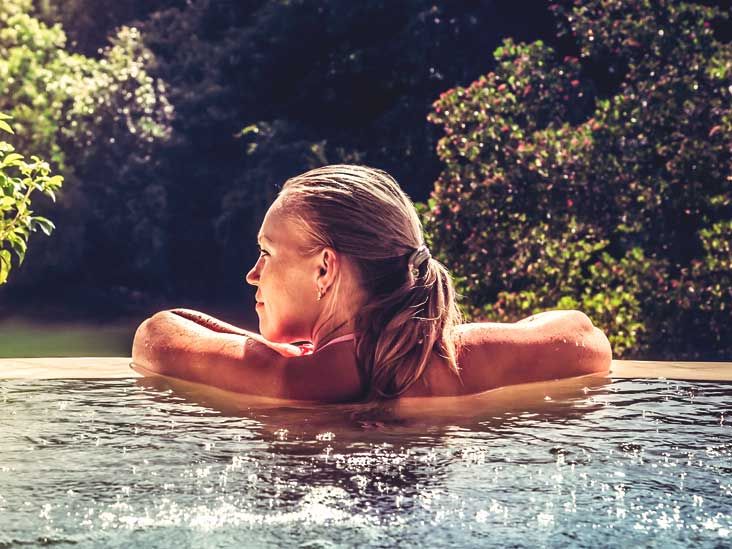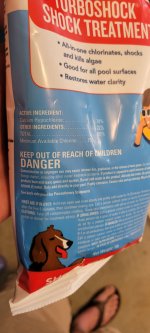- Mar 20, 2023
- 250
- Pool Size
- 30000
- Surface
- Vinyl
- Chlorine
- Salt Water Generator
- SWG Type
- CircuPool Universal40
Because we have a pool, we've been having my 2.5 year old doing Infant Self Rescue swim lessons. This is the 4th week.
The instructor emailed tonight to cancel for everyone tomorrow, because she went to urgent care because she has some kind of itchy bumpy rash. Wife told me that last week she said she had a bit of a rash at one point too. (Though she was initially attributing that to the rash-guard type shirt she wears. I was already starting to suspect chemistry.)
The pool is an indoor residential pool. (Instructor is renting the time in the pool; she's not the homeowner.)
I've been getting in and participating with my son's lessons last week and this week, and on Tuesday noticed a little itchiness, and also did one day last week. I have also noticed the water is a little murky some days, and some days the combined chlorine smell is pretty strong in the building.
Not at all surprising to me, she told me that the local pool store says that the water is testing fine... I told her I didn't want to just throw them under the bus, but that I wasn't surprised. And I'd bring home a sample on Friday (assuming she's feeling better then and we have lessons then) and run it through my kit.
Just curious what could be so out of whack that would cause a rash? She is in the water for a few hours each day, but I'm pretty sure even that shouldn't cause a rash in a well-balanced pool!
Pool room has some sky lights and lots of windows, but I seem to remember seeing that indoor pools shouldn't have much, if any CYA, right? Edit: I see the comment about a little CYA being necessary to buffer the chlorine. That makes sense.
The instructor emailed tonight to cancel for everyone tomorrow, because she went to urgent care because she has some kind of itchy bumpy rash. Wife told me that last week she said she had a bit of a rash at one point too. (Though she was initially attributing that to the rash-guard type shirt she wears. I was already starting to suspect chemistry.)
The pool is an indoor residential pool. (Instructor is renting the time in the pool; she's not the homeowner.)
I've been getting in and participating with my son's lessons last week and this week, and on Tuesday noticed a little itchiness, and also did one day last week. I have also noticed the water is a little murky some days, and some days the combined chlorine smell is pretty strong in the building.
Not at all surprising to me, she told me that the local pool store says that the water is testing fine... I told her I didn't want to just throw them under the bus, but that I wasn't surprised. And I'd bring home a sample on Friday (assuming she's feeling better then and we have lessons then) and run it through my kit.
Just curious what could be so out of whack that would cause a rash? She is in the water for a few hours each day, but I'm pretty sure even that shouldn't cause a rash in a well-balanced pool!
Pool room has some sky lights and lots of windows, but I seem to remember seeing that indoor pools shouldn't have much, if any CYA, right? Edit: I see the comment about a little CYA being necessary to buffer the chlorine. That makes sense.
Last edited:







